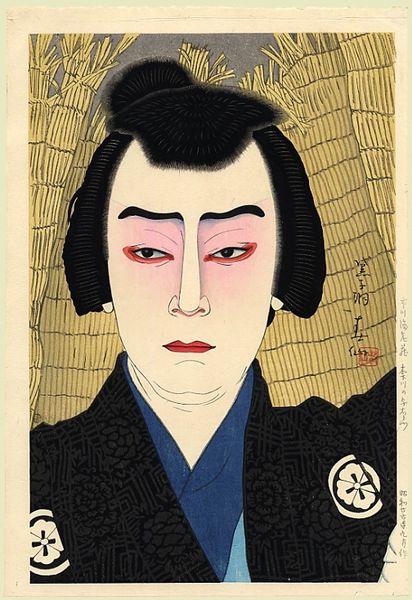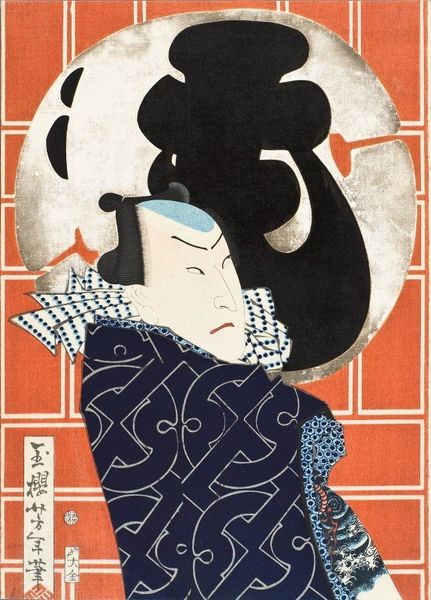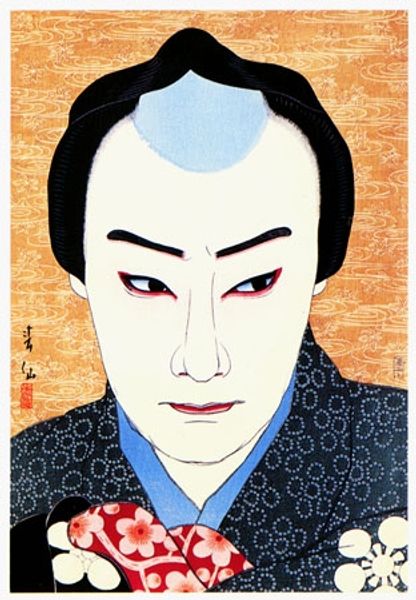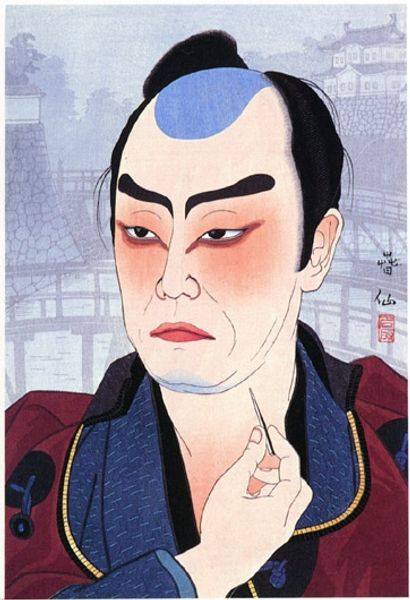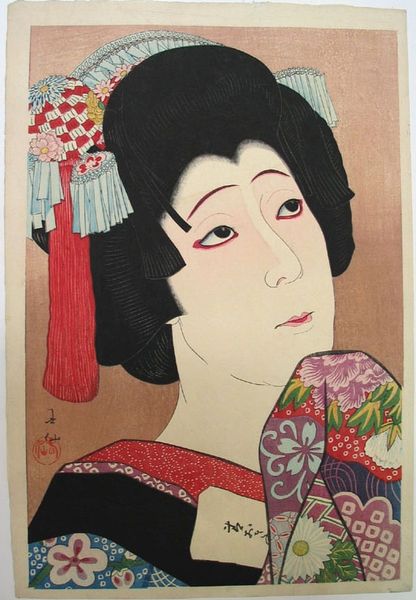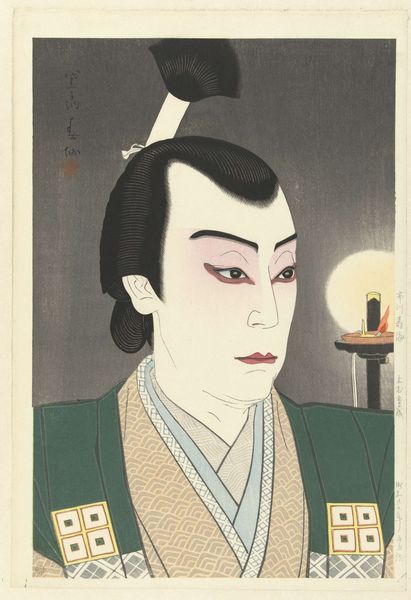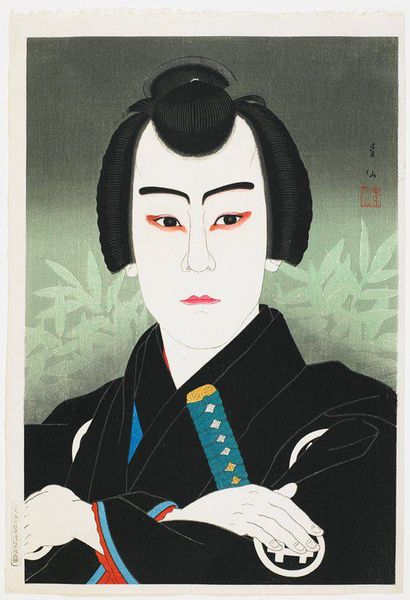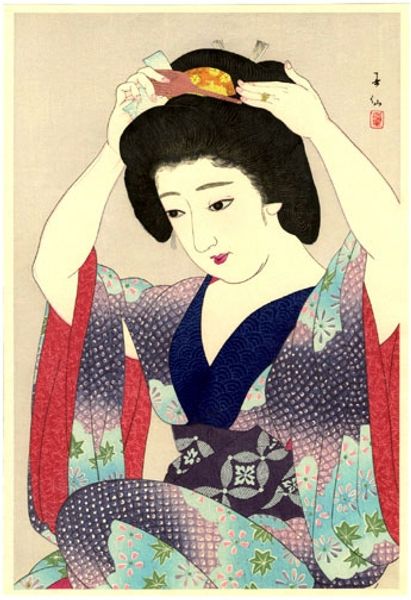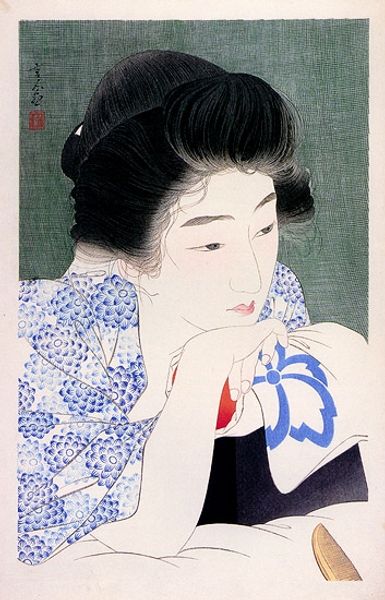
Copyright: Public domain Japan
Natori Shunsen created this woodblock print depicting Ichimura Uzaemon as Naoji. The headscarf, or "hachimaki," and the stark makeup serve as potent symbols within the Kabuki tradition. The hachimaki, often worn tightly around the head, signifies determination and focus, reminiscent of warriors preparing for battle or laborers engaged in strenuous work. Think of similar head coverings in different cultures, from the turbans of the Middle East to the bandanas of laborers, each signifying identity and purpose. In Kabuki, this simple cloth transforms an actor, signaling a shift in character. The makeup, with its exaggerated lines and colors, functions as a mask, amplifying emotions. This resonates deeply with primal archetypes—masks used in rituals to invoke deities or spirits. The actor becomes a vessel, channeling collective anxieties and aspirations. Notice how the severe brow and melancholic gaze evoke empathy. It's a testament to how visual symbols can transcend time, resurfacing in diverse contexts, continuously evolving, and engaging us on a subconscious level.
Comments
No comments
Be the first to comment and join the conversation on the ultimate creative platform.
